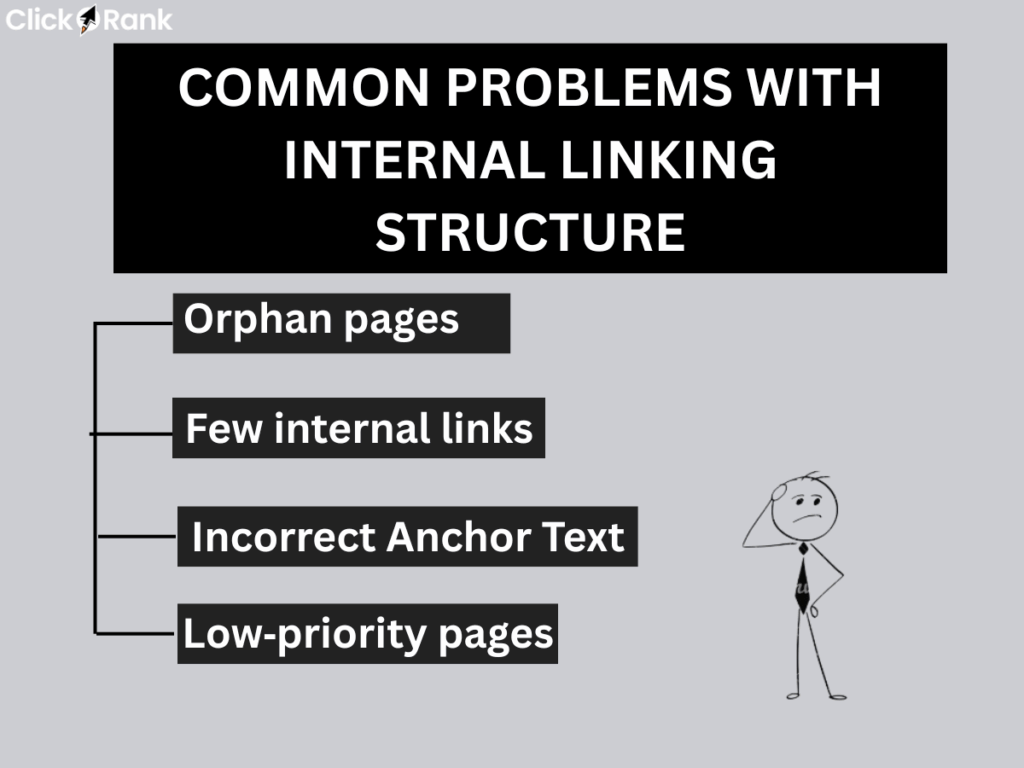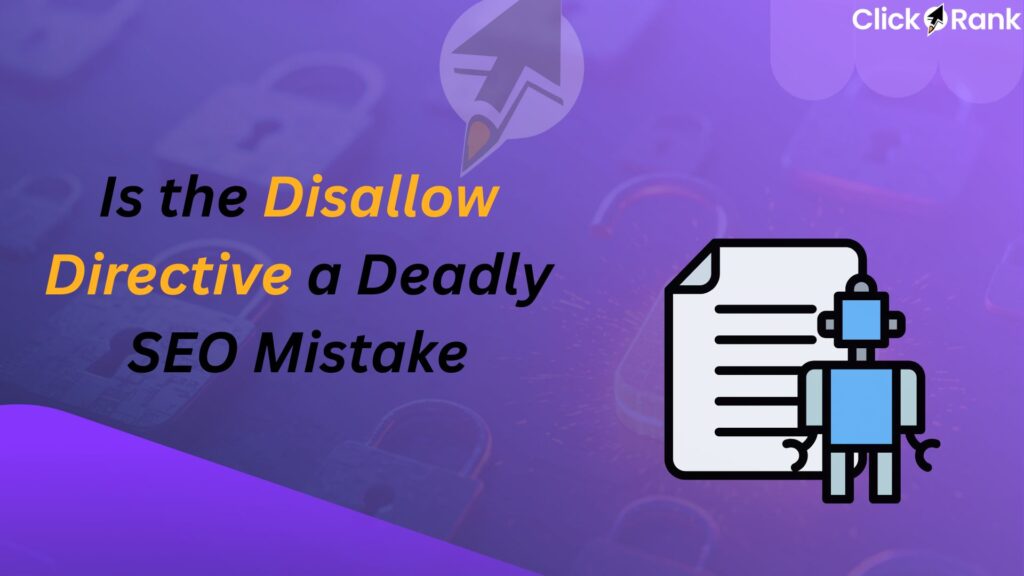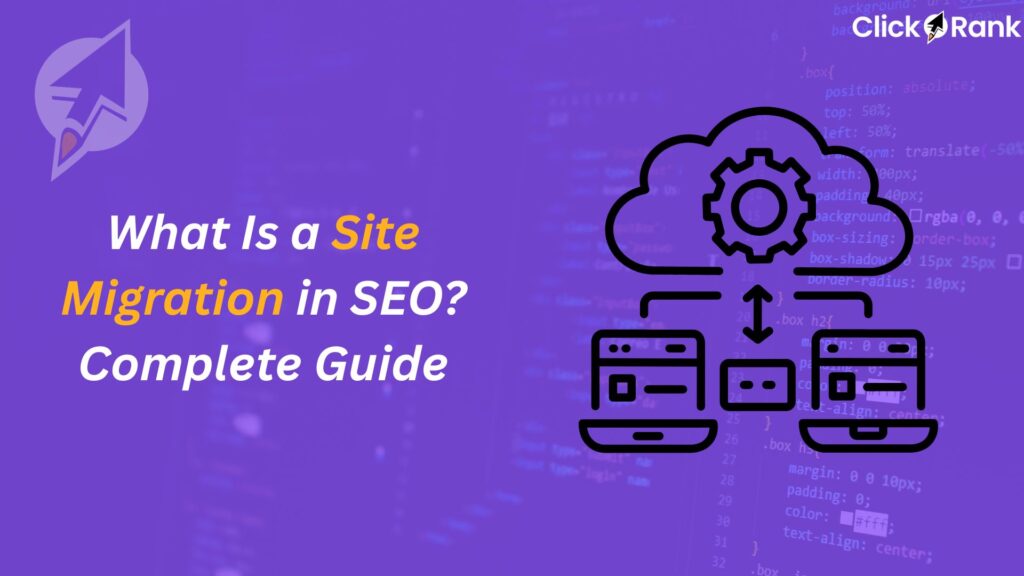Ever feel like your best content is hiding in plain sight? When your internal links don’t guide users or search engines effectively, important pages get buried, crawl budget gets wasted, and rankings suffer.
But with a clear internal linking structure, you create natural paths through your site, help search engines understand what matters, and make sure your content gets seen and ranked.
This guide breaks down how to structure internal links that work, fix common issues like orphan pages, optimize anchor text, and automate the process using ClickRank’s AI-powered tools as part of a Technical SEO Audit.
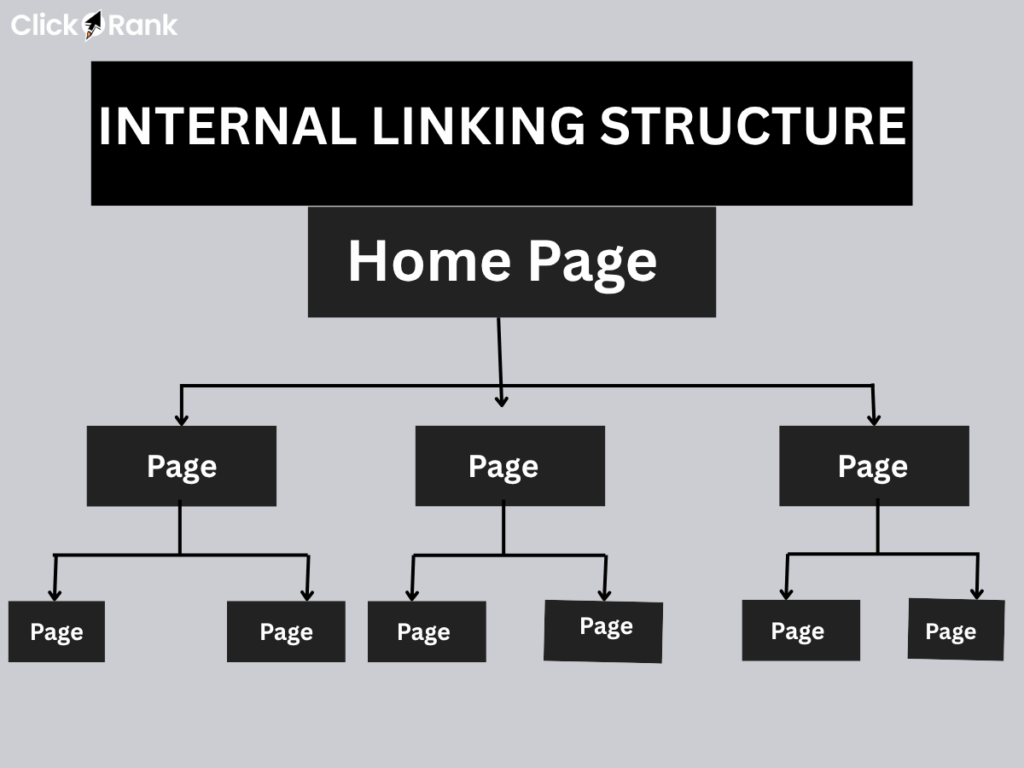
What Is an Internal Linking Structure?
An internal link is a hyperlink that points from one page on your website to another page on the same domain. Collectively, all of the internal links on your site form an internal linking structure, sometimes called the site’s architecture. This structure isn’t visible to users at first glance, but it’s the blueprint that determines how easily people and search‑engine bots can navigate your content.
When you think about a site as a network of pages and connections, your internal linking structure acts like a system of roads and highways. Some routes, like navigation menus or the homepage, serve as wide, heavily trafficked highways, while others such as contextual links within articles are narrower paths that still guide visitors to valuable destinations. By organizing your internal linking structure strategically, you determine which pages receive the most visibility, authority, and clicks.
It’s important to understand the difference between internal links, external links and backlinks.
- Internal links live inside your site and pass authority and relevance between your own pages.
- External links point from your site to another domain.
- Backlinks are links coming into your site from other websites.
While all three types influence SEO, this guide focuses on how to use internal links to optimize your site’s flow of link equity and user experience. We’ll discuss external links and sitemaps toward the end for comparison.
Why Internal Linking Structure Matters?
Internal Linking Structure are one of the most overlooked tools in SEO. They help search engines find and index your pages, pass PageRank through your site, and guide visitors to useful content.
The concept of crawl depth, how many clicks it takes to reach a page from your homepage, matters more than most people realize. Pages that are closer to the homepage are easier for Google to find and are more likely to be indexed. But if important content is buried four or more clicks deep, it might never be seen unless you actively push it through external links or manual efforts.
A smart internal linking structure keeps valuable content within two or three clicks, making it easier for both users and crawlers to access. It also ensures your site flows logically, with clear paths that help people (and bots) get to what matters fast.
On top of that, internal linking structure helps spread link equity; the ranking power passed through your links. If your site has pages that already perform well and earn backlinks, connecting them to relevant pages can help boost your entire site. Without a plan, that authority gets stuck in a few places while the rest of your content stays hidden.
Good internal links make your site easier to navigate, faster to rank, and better at sharing its own strength.
Why Building a Solid Internal Linking Structure Matters for SEO?
Now that you know what internal links are, let’s explore why their structure has such a profound effect on your site’s performance. A strategic linking architecture influences how search engines crawl your site, how authority is distributed and how users interact with your pages. Ignoring this foundational aspect of SEO can lead to wasted crawl budget, poor engagement metrics and underperforming content.
Improved Crawl Depth and Indexation
Search engines don’t crawl everything, they have a limited crawl budget for each site. If your website has hundreds or thousands of pages, Googlebot will focus on what it can access easily. That’s why pages buried too deep, more than four clicks from your homepage, often get ignored.
An effective internal linking structure strategy helps solve this by keeping important content within two or three clicks of your homepage. This makes it far more likely that search engines will reach and index those pages.
This is especially important for ecommerce sites or large content platforms where new pages are added all the time. The faster search engines find and index your new content, the sooner it can start ranking and bringing in traffic.
Better Distribution of Link Equity
External backlinks bring in link equity, but your internal linking structure determines how that equity flows throughout your site. When you connect high-authority pages to relevant content, such as articles or product pages, you help distribute ranking power where it’s most needed. The authority of the linking page, the relevance between pages, and the anchor text you use all influence how effectively equity is passed along. With a well-optimized internal linking structure, you prevent valuable link equity from getting trapped on just a few pages.
For example, if your blog’s “Ultimate Guide to Technical SEO” has dozens of backlinks, you can boost your newer or deeper articles by linking to them contextually. This helps them rank without waiting for external links. Conversely, if you link to low‑priority pages or irrelevant content, you dilute your site’s overall authority.
Enhanced User Experience and Engagement
Internal links work like signposts, guiding visitors toward the next piece of content they care about. When you add relevant, contextual links, people stay longer, explore more pages, and start to trust the value of your site.
A strong internal linking strategy makes the experience smoother, it connects related content in a way that answers questions naturally. When users find what they’re looking for without effort, they’re more likely to take action, whether that’s signing up, requesting a quote, or making a purchase.
Clear Signals About Site Structure and Relevance
Search engines use internal link structure to understand your content’s hierarchy. When multiple pages link back to a pillar page, it signals that the pillar page is your definitive resource on that topic. Similarly, when cluster pages link to each other and back to the pillar, they indicate topical relationships.
Without these signals, search engines may treat your pages as unrelated islands, which makes it harder to build topical authority.
A well‑designed internal linking structure clarifies which pages target broad topics (pillars) and which pages cover specific subtopics (clusters), helping search engines deliver the right page for each query.
What Problems Can Occur in Internal Linking Structure?
Even well-intentioned websites often fall into common traps that weaken their internal linking structure and reduce overall SEO impact. Identifying these issues is the first step toward fixing them. Let’s explore the most frequent problems and the best solutions to optimize your internal linking structure and get your site back on track.
Orphan Pages
Orphan pages are pages with no internal links pointing to them. They sit outside your site’s structure, making them hard for search engines to find and index. Without links from other pages, they often go unnoticed, wasting crawl budget and underperforming in search.
To fix them, start by identifying which pages have no internal links, tools like Google Search Console can help. Then decide if each page is worth keeping. If it is, connect it to relevant content through internal links. If it’s not adding value, consider removing or redirecting it.
Too Many or Too Few Internal Links
Finding the right balance of internal links is part art, part science. Too many links on a single page can dilute link equity and overwhelm users; too few links limit discoverability. You want enough internal links to guide crawlers and readers without creating a distracting wall of links. Use your navigation and context as guides: include links to pillar pages, clusters and relevant tools or resources. Avoid linking to unrelated content just to create a link.
Incorrect or Non‑Descriptive Anchor Text
Anchor text is the clickable text of a link. Generic phrases like “click here” or “learn more” fail to convey context to users and search engines. Portent’s guide emphasizes that descriptive anchor text builds trust and helps users predict what they’ll find on the linked page. Generic anchors like “read more” provide no context and can frustrate visitors. Instead, your anchor text should naturally include the keyword or topic of the linked page.
Overlinking to Low‑Priority Pages
It’s tempting to add internal links everywhere, but linking from every page to every other page weakens your internal linking structure and confuses search engine crawlers. Overlinking can also harm user experience, especially when links lead to unrelated or overly promotional content. Instead, focus on building a strategic internal linking structure by connecting high-authority pages to your most valuable resources.
Keep your navigation menus simple and contextual links relevant. If a page no longer serves a strategic purpose, remove or redirect it instead of repeatedly linking to it.
How to Construct a Scalable Internal Linking Structure?
Effective SEO comes from an intentional internal linking structure, not scattered or random links. A well-designed internal linking structure supports your overall content strategy, strengthens site architecture, and makes it easier to scale while serving both users and search engines.
Create Pillar Pages and Topic Clusters
- Pillar Pages are comprehensive, high‑level resources covering a broad topic in depth. They serve as hubs that link out to more specific cluster content. The Conductor guide explains that pillar pages are designed to be “broad yet deep” so they retain users and secure backlinks.
- Topic Clusters, on the other hand, are groups of related pages that cover subtopics in detail. Each cluster page links back to its pillar and may interlink with other cluster pages. This hub‑and‑spoke model improves user experience by answering all of a searcher’s questions and signals to search engines that your site is an authority on the subject. Creating these topic clusters is a key part of the strategy. To quickly find and plan new ideas for your cluster content, a tool like our free Content Idea Generator can provide a great starting point, making it easier to build out a scalable and interconnected content hub.
Optimize Navigation and Menu Links
Your site’s navigation plays a vital role in shaping your internal linking structure for both crawlers and users. Ensure your main menu links to the most important pillar pages and essential conversion pages, such as contact or pricing pages. Avoid overcrowding your navigation with every category or tag instead, organize related content logically to maintain clarity.
A shallow navigation helps strengthen your internal linking structure by keeping your best content no more than one or two clicks away from the homepage. Since Google treats navigational links differently from contextual links, use navigation to highlight high-priority sections and rely on in-content links to build deeper, more meaningful connections.
Add Contextual and Breadcrumb Links
Contextual links appear within your content and point readers to related resources. These links are powerful because they appear in the flow of the article, allowing you to use descriptive anchor text and emphasize the relevance of the linked page.
Breadcrumb links show the hierarchical path from the current page back to its parents (e.g., Home > Blog > Internal Linking). Breadcrumbs help users navigate upwards and also provide additional internal links for crawlers. They’re especially useful for ecommerce and large blogs. If your CMS allows it, enable breadcrumb navigation and ensure the markup uses structured data so search engines can display it in the SERPs.
Maintain Optimal Crawl Depth
Pages buried four or more clicks from the homepage are less likely to be indexed. To improve crawl depth:
- Limit the number of categories and subcategories in your URL structure.
- Use tags sparingly; too many can create duplicate thin pages.
- Link to important pages from your homepage and pillar pages.
- Update your XML sitemap and submit it in Google Search Console to ensure new pages are discovered.
Use Descriptive Anchor Text
Anchor text should be clear, specific, and give users a good idea of what they’ll find. Use enough words to make the destination obvious, and avoid vague calls to action. The best anchor text blends naturally with your content and includes relevant keywords. For example:
- Good: Learn how to optimize crawl depth with our step‑by‑step guide.
- Bad: Click here for more information.
Descriptive anchors not only help readers trust your links but also reinforce topical relevance in Google’s eyes.
Incorporate Internal Link Auditing Into your Workflow
Your internal linking structure isn’t something you set up once and forget. As you add new content, refresh existing posts, and reorganize categories, it’s important to review and update your internal links regularly. Use a content calendar or project management tool to schedule quarterly audits of your internal linking structure. Add or remove links based on changes in your priorities, user behavior, and the competitive landscape to keep everything optimized and effective.
How Do You Audit Internal Links and Fix Issues?
A regular internal linking audit helps you identify orphan pages, broken links, overlinked pages and opportunities to strengthen your site’s architecture. Here’s how to conduct a thorough audit using popular tools.
Step 1: Map Your Site’s Current Structure
Start by exporting your site’s existing URLs. You can use Screaming Frog SEO Spider (free up to 500 URLs) to crawl your site and generate a report of all pages, their status codes, the number of internal links and the anchor text used. Screaming Frog will show the **crawl depth** (number of clicks from your start URL) and highlight pages with zero internal links.
Export the list and note any patterns: Do you have many orphan pages? Are important URLs buried deeper than three clicks?
Google Search Console’s Links report also shows which pages receive the most internal links. Navigate to Links > Internal links and see how many links point to each page. Pages with too few internal links might need more exposure. Compare this list to your pillar and cluster pages: your pillars should have the most internal links, while cluster pages should have a moderate number.
Step 2: Identify and Fix Orphan Pages
Using Screaming Frog’s report, filter pages with zero inlinks. For each orphan page, decide whether it should exist. If it’s valuable, integrate it into your structure by adding links from relevant pillar or cluster pages. If it’s outdated or redundant, consolidate it into a more comprehensive piece or redirect it to a better resource. Removing low‑quality orphan pages helps focus your link equity and crawl budget on content that matters.
Step 3: Evaluate Link Quality and Anchor Text
Review the anchor text used across your internal linking structure to ensure it’s descriptive and keyword-rich. The anchor text should clearly describe the target page and provide meaningful context for both users and search engines. Avoid repeating the same anchor text for every link variety makes your internal linking structure look more natural and helps capture a broader range of keyword variations. Also, identify and replace generic anchors like “click here” with more relevant, descriptive phrases.
Step 4: Check for Broken or Redirected Links
During your crawl you may find links pointing to 404 pages or old URLs that now redirect. Fix broken links by updating them to the correct URLs, and replace redirected links with direct links to avoid unnecessary hops. Broken and redirected links waste crawler resources and frustrate users.
Step 5: Optimize Crawl Depth and Link Placement
If your audit shows that important pages are buried four or more clicks deep, it’s a sign your internal linking structure needs adjustment. Add links from higher-level pages to surface valuable content. For instance, if your article on canonical tag best practices is hard to find, link to it from your internal linking pillar page or technical SEO audit page. Also, ensure your highest-traffic pages connect to key conversion pages. A strong internal linking structure keeps core content within two or three clicks from the homepage, improving accessibility and crawl efficiency.
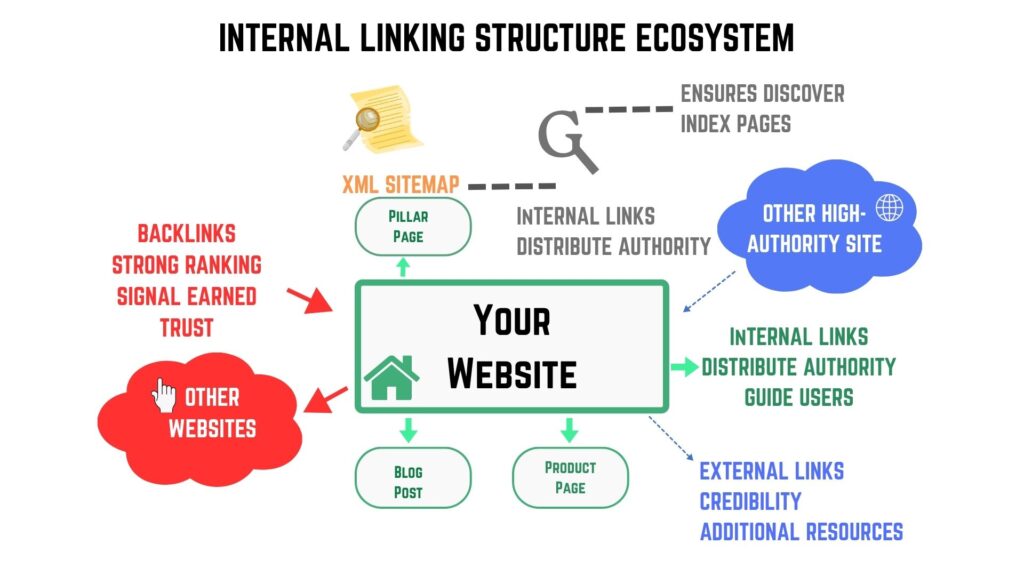
How Do Internal Links Compare to External Links and Sitemaps?
It’s important to understand how your internal linking structure differs from external links and sitemaps—and when to use each effectively.
- Internal Links: Connect pages within your site to distribute authority and guide users. They’re under your complete control. Use them strategically to highlight pillar pages, cluster content and conversion pages.
- External Links: Point from your site to another domain. External links help users find additional resources and can be seen as a vote of confidence. Outbound linking to high‑authority sources can improve your content’s credibility, but too many can draw visitors away.
Also, you can mark external links as `rel=”nofollow”` if you don’t want to pass authority or encourage search engines to follow them. Internal links rarely need `nofollow` because you typically want Google to crawl your own pages.
- Backlinks: Links from other websites pointing to your pages. Backlinks are one of the strongest ranking signals. Earning backlinks usually requires creating high‑quality, shareable content and promoting it. Once you have them, internal linking helps distribute that authority.
- XML Sitemap: A file listing all the pages on your site you want search engines to index. Sitemaps are especially useful for large sites or sites with complex architectures. However, a sitemap does not replace internal linking. Search engines still rely on internal links to understand the relationship between pages.
Use sitemaps and internal links together: sitemaps ensure discovery; internal links ensure understanding and authority flow.
Summary and Next Steps
Creating an effective internal linking structure takes both strategy and intuition. When you treat your site as a connected network—not a collection of isolated pages, you can build clear paths that help both search engines and real people navigate with ease. Here are the key takeaways:
- Keep important pages within two or three clicks from the homepage to ensure they’re indexed.
- Use pillar pages and topic clusters to organize content and establish topical authority.
- Distribute link equity by linking high‑authority pages to related articles.
- Use descriptive anchor text that tells users where they’re going and reinforces relevance.
- Avoid orphan pages, overlinking and generic anchors.
- Conduct regular internal link audits using tools like Google Search Console, Screaming Frog and ClickRank to find orphan pages, fix broken links and optimize crawl depth.
Now it’s time to apply what you’ve learned. Start by auditing your current internal links, identifying orphan pages and adding links to your most important resources. Then create or refine your pillar pages and build out topic clusters around them. As you publish new content, always link back to relevant pillars and clusters using descriptive anchor text.
What is an internal linking structure in SEO?
It’s how your pages connect through links within your own site. A good structure helps search engines and users find content, understand page importance, and pass authority. Strong setups use pillar pages, supporting content, and contextual links. Poor structures can leave pages buried or uncrawled.
How do I build an internal linking structure?
Build your structure by creating pillar pages for core topics and linking them to related cluster pages using clear, keyword-rich anchor text. Keep important content within two or three clicks from the homepage, add contextual links in your articles, and maintain simple navigation. Regular audits help catch orphan pages or broken links. Tools like ClickRank automate this process by finding link gaps and suggesting optimized anchor text.
How many internal links are good for SEO?
There’s no perfect number. Aim for useful, relevant links that guide readers and support your content. A typical article might have 5–10 contextual links, while a pillar page could have many more. Focus on clarity and value; too few links limit visibility, too many can confuse users and dilute impact.
Do internal links need to be nofollow?
No. Internal links should usually be dofollow so search engines can crawl your pages and pass link equity. Use nofollow only in rare cases, like login pages or duplicate content you don’t want indexed. For most SEO goals, keeping internal links dofollow is best.
What is the difference between internal linking and sitemaps?
Internal links connect pages within your site, guide users, and pass authority between content. Sitemaps are lists of URLs that help search engines find your pages. While both aid discovery, internal links support navigation and SEO, whereas sitemaps act more like a directory. A sitemap can’t replace a strong internal linking structure.
How often should I audit my internal links?
Review your internal links at least once every quarter. If you regularly publish new content or update your site’s structure, audit more often, especially before and after major changes. Use automated tools to catch issues like broken or orphan pages as they appear.
